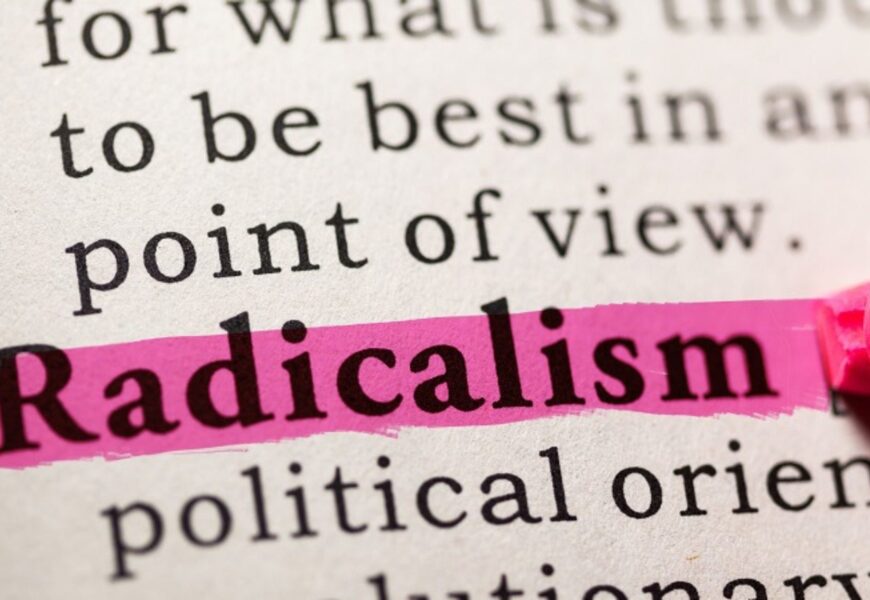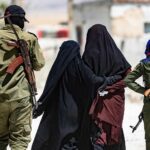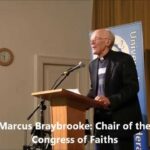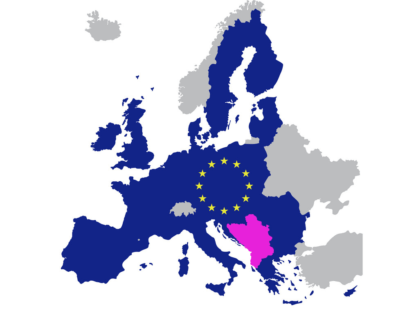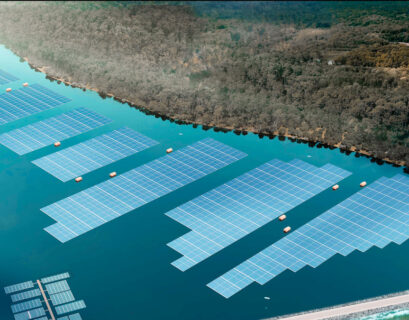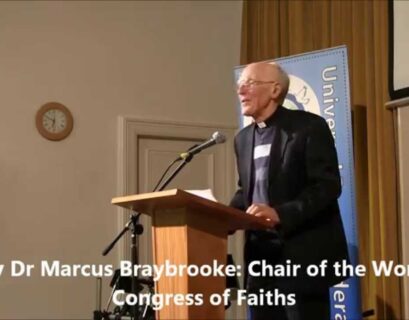By Arjan Dyrmishi
Abstract
This paper provides a critical viewpoint on the governance of Islam in Albania. Governance is understood as the relationship between state intervention and societal autonomy. The findings suggest that the governance of Islam in Albania is largely based on societal autonomy. The paper argues that this mode of governance, which has evolved since the end of the communist regime, has allowed the creation of opportunity structures for radicalisation and promotion of Islamist ideology. To illustrate this argument the paper analyses the legal and institutional framework for the relations between the Albanian state and the Albanian Muslim Community. The aim of this paper is to contribute to the debate on religion and security by making evident the logic of governance and to propose a research agenda that contributes to policy solutions through a theoretically guided approach.
Introduction
Radicalisation became a salient issue in the public policy and academic domains in Albania when a hundred or more Albanian citizens joined the Islamic State of Iraq and the Levant (ISIS). Considering the Albanian tradition of religious tolerance and moderation the quest to understand and explain the phenomenon has sparked an extensive media, public and academic debate. The main analytical approach to explaining this trend has focused mainly on the examination of the socioeconomic factors affecting given local communities and individuals,1 and the failure of state institutions in certain policy fields such as security and intelligence or education.2 In general, academic studies and punditry alike argue in favour of greater involvement of the government.3,4
Indeed, the government has responded to the problem by undertaking a number of policy actions most notably the criminalization of foreign fighting, the introduction of harsher sentences for supporting, financing and participating in terrorist activities,5 the adoption of a strategy to combat violent extremism,6 and the arrest and trial of nine individuals suspected of recruiting and financing the travel to Syria and Iraq of Albanian citizen. Moreover, the Albanian government has renewed the emphasis on religious tolerance and has pledged to assume a greater role in tackling the problem by lobbying for the establishment in Albania of a regional centre to combat
violent extremism.7 This paper acknowledges the need for greater state intervention but maintains that it is difficult to empirically assess and demonstrate the effectiveness of state intervention in particular policy fields given that the regulation of the Islamic presence in the society involves many policy fields and a large number of state and private institutions and actors.8
Therefore, in order to cope with the analytical complexity of the issue this paper uses the concept of governance in order to examine how the society creates opportunities or constraints for radicalisation and violent extremism. Governance in this paper implies ‘every mode of political steering involving public and private actors, including traditional modes of government and different types of steering, from hierarchical imposition to sheer information measures’.9
The governance concept presupposes the existence of a multitude of public and private actors interacting with each other in the conditions of interdependence.10 As a result, collective action takes place vertically, across multiple levels of government and horizontally, across multiple arenas. By analysing the interaction of public and private actors at the policy, polity or political dimensions, different modes of governance can be identified on a continuum between state intervention and societal autonomy.11
In the policy dimension the mode of governance can be defined by examining elements such as the abidingness of the legal provisions, the approach to implementation, or the presence or absence of sanctions, among others. In the political dimension, it is the degree of involvement of public and private actors in the decision-making system, while in the polity dimension, the mode of governance may be defined by examining elements such as the hierarchical or non-institutionalised structure of interactions, the centralised or decentralised locus of authority, or the degree to which decision-making processes are formally institutionalised.12 In the case of Albania using governance as a framework for analysing radicalism and violent extremism in Albania can be helpful for the following reasons.
First, although the problem of radicalisation and violent extremism was triggered by the emergence of ISIS and the recruitment of Albanian citizens to fight along it, radicalisation has been an ongoing process that has been taking place in Albania irrespective of ISIS. According to a survey conducted in 2011-2012 by Pew Research Center, 12% of Albanian Muslims surveyed supported making Sharia the official law in their country while 6% of them justified suicide bombing in the defence of Islam.13 While one can argue about the differences between cognitive radicalization and violent radicalisation – the former being the process through which an individual adopts ideas that are severely contrary to the mainstream, refutes the legitimacy of the existing social order, and seeks to replace it with a new structure while the latter occurring when an individual employs violence to further the views,14 – the adoption of radical views by such high number of Albanian Muslims within e relatively short period cannot be linked only with failures in particular policy fields. Therefore a more comprehensive and systematic analysis of the problem is needed. Secondly, the governance approach allows for the examination of the problem by moving the focus of the analysis from the level of individuals or given communities to the analysis of the opportunities and constraints the system of governance can create for the development of radicalism and violent extremism.
The main finding is that the mode of governance of Islam in Albania is largely based on societal self-regulation and a reduced role of public authority. This mode of governance does not appear to be based on any overarching concept rather it has resulted from processes that have evolved over the last two and half decades. Although this paper doesn’t pretend to establish a purely scientific causal link between this mode of governance and radicalisation it argues that this mode of governance has led to the creation of opportunity structures that advance the Islamist ideology and promote radicalism.
Legal framework
Albania has four traditional religious communities: the Sunni Muslim, the Bektashi Muslim, the Orthodox Church and the Catholic Church. Although no exact figures exist, the Sunni Muslim community is acknowledged as the largest one.15
The regulatory framework on religions in Albania applies to all four religious communities but the focus of this paper will focus on the regulation of the Sunni Muslim community called the Albanian Muslim Community (AMC).16 Albania has no law on religion or on Islam. Relations between the state and Islam are based the provisions on religions, laid down by the Constitution, on laws regulating different policy areas, and on the agreement between the Albanian government and the AMC.
The current regulatory framework on Islam has evolved over the last two and half decades since freedom of religion was re-established in 1991. In the early period after the end of communism, the legal provisions on religions were quite broad. The Provisional Constitution that was adopted soon after the first pluralist election took place in March 1991 stated that ‘Albania is a secular state’ and that ‘the state respects the freedom of religion and creates the conditions for practising it.17 Religious freedom and limitations were provided by specific laws. The obstruction of activities of religious organizations and ruining or damaging places of worship became punishable by the criminal code,18 while limitations were provided in politics and on the education field.
The formation of political parties on a religious basis was banned by law,19 while the law on preuniversity education provided secular education and the ban of any religious indoctrination.20Differently from the Provisional Constitution, the Constitution adopted in 1998 laid down broader provisions on the religions. A notable conceptual development was the removal of the explicit reference to ‘secularism’ provided in the Provisional Constitution that was replaced with the concept of ‘neutrality’. Article 10 states that: ‘in the Republic of Albania there is no official religion and the state is neutral in questions of belief and conscience while it guarantees the freedom in their expression in public life’.21
In terms of the analysis of the mode of governance by examining the involvement of the public and private actors in the politics dimension,22 this policy outcome showed that differently from the immediate post-communist period, when state-religion relations were defined exclusively by public actors, the drafting of the 1998 Constitution involved religious actors whose role was important in dropping the explicit notion of ‘secularism’. The increased relevance of religions in determining policy outputs was evident in the recognition by the state of sects and cults, in addition to the religious communities. Another criterion to examine the mode of governance is the approach to the implementation of policy outputs, which may be ‘rigid’ in the case when state intervention prevails or ‘flexible’ when the autonomy of societal actors is greater.23 Empiric evidence shows the implementation of the Constitution has been flexible regarding the regulation of state-religion relations.
As the influence of religious communities in the political dimension grew they managed to establish relations with the Albanian state based on their perspectives rather than the state perspective. A draft law on Religious Communities drafted in 1991 was floated for over a decade but was never adopted. The draft law provided for the regulation of religious freedom and practice on the principle of state-church relations, with no distinction between the religious communities.24 Differently from the regulation of state-religion relations based on a unified approach the 1998 Constitution provided for a regulatory regime that was based on agreements signed between the Religious Communities and the Council of Ministers (CoM) to be ratified by the parliament.25
As religious communities strived to promote their agendas it took several years to sign the agreements between the CoM and the religious communities. The agreement with the Catholic Church was signed in April 2002,26 four years after the adoption of the Constitution, while the agreements with the AMC, the Orthodox Church and the Bektashi Community were signed in 2009.27 Moreover, differently from the draft law of religions that laid down unified provisions for all religions the agreements with the religious communities vary in content.
What is worth noting in this context, is that for eighteen years no law has been in place to govern relations between the Albanian state and the AMC. Various policy responses such as the adoption of the law on financing terrorism, seizure of terrorist-financed assets or expelling and arrests of foreign suspected terrorists,28 did not account for a comprehensive regulatory basis. The immediate implication of this omission is that state-religion relations have been largely regulated on a market basis rather than based on a hierarchical approach, which would limit the
number of actors involved.29
As many authors have already pointed out, it is during this time span that the major developments that have shaped Albanian post-communist Islam have taken place, including the development of locally grown radicals.
The involvement of powerful actors in the Albanian religious market with no constraints led to the development of opportunity structures,30 which put Albanian traditional Islam under huge pressure to transform, leading among others to the establishment of locally grown Salafi and Wahhabi groups. In the 1990s, the actors from the Arab world were the most influential while in the following decade, attempts were made to remove the Arab influence by allowing a greater Turkish involvement,31,32 have only led to further fragmentations while the Arab influence has remained entrenched.33
Two outcomes that have taken place during this period but have gone unnoticed are the normative ‘Arabization of Albanian Islam’,34 and the normative shift from the Albanian tradition of fusion of national and religious identities, where national identity prevailed,35 towards an Islam concerned mainly with religious identity shaping. Let’s examine first the religion-national identity relations. As the agreement between the government and the AMC stipulates the statute is the fundamental legal document that recognizes AMC as a legal entity. 36
The AMC charted its first statue in 1993, but it has been amended a few times since then, in 1998, 2002 and 2005. In the first statute adopted in 1993, Article 2 stated that ‘the AMC has the duty to instil and develop the feeling of love and loyalty towards the fatherland’.37 In the following statutes ‘love and loyalty towards the fatherland’ is no longer stated as the main objective of the AMC’. In the 1998 amendment, Article 2 was modified as follows: ‘the AMC has the duty to instil the love for the Islamic religion, the fatherland and the whole Albanian nation’,38 while in 2005 the same Article was amended as follows: ‘the AMC has a religious and charity purpose. It has as an object of its activity to ‘propagate, awake and strengthen the Islamic faith to the Muslims believers, to protect the dignity, rights and interests of the Muslims, to enhance and develop a sense of love and loyalty to the homeland and the people of Albania’.39
Another relevant aspect to note in the continuum of the statute amendments is the introduction
of the Arabic language as the only liturgical language to be used during religious services. The 1993 statute provided only limited requirements on the Arabic language stating it as a requirement for the appointment of the Director of Cultural Affairs.40
The 1998 statute extended this requirement to the position of the Deputy Chairman of the AMC also,41 while the 2002 amendment introduced Arabic as an obligatory requirement for the election of the Chairman of the AMC.42 Compulsory knowledge of Arabic was introduced to a number of officials and clerks. The 2005 statute introduced Arabic as the only liturgical language to be used during religious services.43 From the governance perspective, these developments are important because identity formation based on language and not on religion has long been the cornerstones of Albanian national identity,44 so any modification should have triggered the involvement of state actors.
The case of the Albanian Orthodox League and the Ottoman Sublime Porte could be enlightening in this respect. In 1910 the Albanian Orthodox League wrote to the Sublime Porte demanding the opening of an orthodox church where the Albanian language was to be used for providing liturgical services, the grand Vezir replied that he was not against it but would leave this decision to the Ottoman parliament.45 From this perspective the analysis of the institutional structures that serve as meeting points between the state and Islamic actors begs closer attention.
Institutional framework
With the aim of maintaining relations with the religious communities and helping create the conditions for practising religion in 1992, the Albanian government established the State Secretariat on Relations with Religious Communities (SSRRC). Since its establishment, the SSRRC, which in 1999 was transformed into the State Committee on Cults (SCC),46 has been the main and only government structure dealing with religious affairs.
However, despite its relevance of being the main point of contact between the state authorities
in the context of the growing relevance of religion in the public sphere, the SCC has remained weak in terms of capacities and performance.
When it was established in 1992 the SSRRC had a staff of three people: from the Sunni Muslim community, the Orthodox Church and the Catholic Church. In 1999 when the SSRRC was transformed into the State Committee on Cults the number of staff was increased to five.47
This number was doubled in 2006 so currently the SCC has ten people: the chairman, five representatives from the religious communities and four civil servants. Given that the representatives of the religious communities are mainly concerned with lobbying with the government to further the agendas of their respective communities practically there are only three civil servants dealing with the whole range of issues that concern the state vis-a-vis religions.
The disproportions in terms of human resources are evident when the organisation and capacities of the AMC are examined. While the AMC is organised at the central and the local governmental level (the AMC and the Muftiates) the SCC has no representation at the local level, making it impossible to reflect the local dynamics into the governance system. Moreover, there has been a lack of long-term focus and planning as the continuous institutional relocation demonstrates. When it was established in 1992, the SCC (then SSRRC) was placed under the Ministry of Culture to be moved two years later under the Council of Ministers. In 2005 it was returned again under the Ministry of Culture and since 2013 it has been placed under the Ministry of Labour and Social Welfare.48
In terms of performance, the SCC has both the tasks, of providing advice in policy-making
processes as well as conducting administrative and executive functions. More specifically the SCC’s tasks are: to coordinate the relations of the government with the religious communities, religious associations or religious-humanitarian; to negotiate the agreements between the Council of Ministers and the representatives of the religious communities; to cooperate with the religious
communities in drafting laws and regulations; to guarantee the freedom of belief and religious
development, understanding and tolerance; to advise the Ministry of Education on the teaching programs and number of schools that provide religious education; to advise the Ministry of Finances on the import of goods of a religious nature.49
The poor performance of the SCC advisory functions can be easily inferred by the overall failure to provide the state and non-state actors with viable policy options and tools to effectively radicalise trends. More specifically it can be inferred by the analysis of the terms of the agreement between the CoM and the AMC, which the SCC has negotiated. For instance one of the omissions of the agreement between the AMC and the CoM is the lack of sanctions in case of failure to comply. The presence or absence of sanctions is another criterion for defining the mode of governance. 50
In order to ensure the implementation of the regulatory regime there have to be sanctions in place which can be applied in case a private actor fails to comply. The agreement between the AMC and the CoM provides as one of the aims of the agreement to ‘recognise the AMC’s reactions and actions towards deformations, extremist trends and any other acrimony expressed by its believers and to provide for the obligation of the AMC to notify the relevant authorities on cases of this nature.51 However the agreement does not provide for any sanction in case of failure to comply with this provision, except for the overall provision that the AMC abide by the Constitution and laws.52
From the empirical perspective, the AMC indeed failed to comply with this provision of the agreement because it proved unable to prevent the radicalisation of Albanian Muslims from taking place, as proved by the investigation and trial of Muslim clerics,53 while no sanction could be imposed for such failure.
On the other hand, the SCC could have relied on its administrative powers to demand the enforcement of the AMC statute which provides for sanctions in case of failure to implement the
statute and regulations and for failure to act in accordance with the Albanian laws.54
According to the statute, the AMC should have administered sanctions to the Muftis and other
relevant clerics and clerks within the AMC that had failed to prevent ‘extremist trends and any
other acrimony expressed by its believers, as the agreement with the CoM provides. Although the Muftiates are responsible for registering all mosques under the property of the AMC, including those ‘built by any legal or physical person’, they had failed to comply with this provision55
When the foreign fighters’ problem emerged the AMC admitted that some 200 mosques in Albania were outside its control.56 On the other hand it has been argued that the so-called ‘illegal mosques’ were among the main drivers for radicalisation and terrorist recruitment in Albania. 57
Similarly, the Muftiates, together with the Department of Education in the AMC Headquarters failed to ensure that religious education is not used to further radicalisation and extremist agendas although their mandate according to the statute is to control the entire Islamic teaching
and educational organized in the religious schools and the training courses organised by the
mosques.58
As the investigation on foreign fighters revealed, radicalisation courses were taking
place in mosques based in Tirana,59 and assumingly in remote areas, as distance for the central
authority is considered among the key radicalisation factors as studies suggest.60
Conclusions
This paper discussed the governance of Islam and radicalisation trends in Albania. Based on the governance approach as the interaction of public and private actors the paper has analysed the regulatory and institutional framework as they have evolved for over two decades and the involvement of public and private actors in shaping regulations, institutions and policy outcomes.
The analysis shows that the influence and role of private actors have increased over the years while the role of the Albanian state has been continually reduced.
However, when tens of Albanian citizens joined ISIS in the Syrian conflict there was a growing demand for an increased role of the state even by Albanian Islamic actors.
In this respect, the tailoring of state intervention through the governance perspective may
yield better and more sustainable outcomes.
First, government institutions for the regulation of Islam should exist at different levels of the state, including the central government, the regional, municipal, city and neighbourhood levels. So when tackling radicalisation trends it is important to ensure the existence and interaction of government institutions at different levels.
Second, Islamic presence and practice in society involve a wider range of spheres and policy fields that should be coherently interlinked such as education, employment, finances, and health. Third, there is a wider set of actors, institutions and instruments that should be considered when tackling radicalism such as NGOs, businesses, schools personnel, prison authorities and staff, etc.,
The analysis of radicalism from the governance of Islam perspective is a useful tool for analysing opportunity structures that may otherwise remain unnoticed. Further research from this perspective in fields such as Islamic education, building and function of mosques, admission and training of imams and religious authorities will provide a more nuanced picture of the problem and will help to better tailor the course of action of state intervention.
________________________________________________________________________________________________________
1 Gjergji Vurmo, Religious radicalism and violent extremism in Albania, IDM Tirana 2015, http://idmalbania.org/wp-content/ uploads/2015/07/Religious-Radicalism-Albania-web-final.pdf
2 Enri Hide, Religious Radicalism and Violent Extremism and in Albania, Albanian Institute for International Studies, AIIS, November 2015,
3 Albert Rakipi, ‘Lindja e një ndikimi të ri radikal fetar në Shqipëri’, Mapo, 21 Mars 2015, at http://www.mapo.al/2015/03/lindja- e-nje-ndikimi-te-ri-radikal-fetar-ne-shqiperi/1
4 Aleksandra Bogdani, ‘Albania Faces ‘Jihadi Fighters in the Shadows’ Threat’, in ‘Balkan Jihadists: The Radicalisation and Recruitment of Fighters in Syria and Iraq’, BIRN, March 2016. http://www.balkaninsight.com/en/file/show/Balkan-Jihadists.pdf
5 Penal Code of the Republic of Albania, Articles 265/a and 265/b (amended in February 2014)
6 Council of Ministers Decision Nr. 930, date 18.11.2015, On the approval of the national strategy to combat violent extremism and the action plan.
7 ‘Violent extremism, together we can succeed: Premier Edi Rama summit of world leaders in the fight against ISIS and violent extremism, organized by President Barack Obama’. 29 September 2015. http://www.kryeministria.al/al/newsroom/lajme/eks- tremizmi-i-dhunshem-sebashku mund-t-ia-dalim
8 Marcel Maussen, The governance of Islam in Western Europe: A state of the art report. IMES, Inst. for Migration and Ethnic Studies, University of Amsterdam, 2006.
9 Adrienne Héritier, New modes of governance in Europe: policy-making without legislating?. MPI collective goods preprint 2001/14 (2001).
10 Adrienne Héritier, New modes of governance in Europe: policy-making without legislating?. MPI collective goods preprint 2001/14 (2001).
11 Oliver Treib, Holger Bähr, and Gerda Falkner. Modes of governance: towards a conceptual clarification’, European Governance Papers, No.N-05-02, Vienna 2005
12 Oliver Treib, Holger Bähr, and Gerda Falkner. Modes of governance: towards a conceptual clarification’, European Governance Papers, No.N-05-02, Vienna 2005
13 Luis Lugo, Alan Cooperman, James Bell, Erin O’Connell, and Sandra Stencel. “The World’s Muslims: Religion, Politics and Society.” Washington: Pew Forum on Religion and Public Life, 2013 (p. 15 and p. 29)
14 Lorenzo Vidino and James Brandon. “Countering radicalization in Europe.” London: International Centre for the Study of Radicalisation and Political Violence. Accessed December 12 (2012): 2012.
15 According to a census organised by the National Institute of Statistics (INSTAT) in 2011 Sunni Muslims constitute nearly 57 per cent of the population (Annual Report on International Religious Freedom: Europe and the New Independent States (US Dept of State, 2014) while according to Pew Muslim Population in Albania is 79.9% (Miller, Tracy. “Mapping the global Muslim population:
A report on the size and distribution of the world’s Muslim population.” Washington, DC: Pew Research Center (2009)
16 A part form the four traditional religious communities two new communities have been recognized since 2011 by the state, based on agreements with the government: the Evangelical Brotherhood of Albania (VUSH)
17 Law Nr. 7491, date 29.4.1991, On Main Constitutional Provisions, Article 7
18 Criminal Code of the Republic of Albania 1995, Articles 131- 133
19 Law Nr. 7502, date 25.7.l991, On political parties, Article 6 and Law Nr.8580, date 17.2.2000, On political parties, Article 7
20 Law on the Pre-university education system, Nr. Nr.7952, date 21.6.1995, Article 7
21 Law nr. 8417, date 21.10.1998, Constitution of the Republic of Albania, Article 10/1,2
22 Treib et al, p.7
23 Treib et al, p.8
24 Silvo Devetak, Liana Kalcina, and Miroslav F. Polzer. “Legal Position of Churches and Religious Communities in South-Eastern Europe.” (2004). pp. 200-206
25 Law nr. 8417, date 21.10.1998, Constitution of the Republic of Albania, Article 10/5
26 Law Nr. 8902 dated 23.05.2002, On the ratification of the ‘Agreement between the Republic of Albania and the Holy See for regulation of mutual relations (Official Gazette No. 26, 2002, Page 836)
27 Law No. 10056 dated 22.01.2009, On the ratification of the “Agreement between the Government of the Republic of Albania and the Albanian Muslim Community on the regulation of mutual relations” (Official Gazette No. 7, 2009, Page 121). Law No. 10 057 dated 22.01.2009, On the ratification of the “Agreement between the Government of the Republic of Albania and
the Albanian Autocephalous Orthodox Church on the regulation of mutual relations” (Official Gazette No. 7, 2009, Page 130). Law No. 10058 dated 22.01.2009, On the ratification of the “Agreement between the Government of the Republic of Albania and
the World Bektashi Order on the regulation of mutual relations “ (Official Gazette No. 7, 2009, Page 146)
28 Eduart Bala, ‘The Financing of Islamist Groups in Albania’, in Freeman, Michael, (eds.), Financing terrorism: case studies.
Routledge, 2016
29 Treib et al, p.9
30 Douglas McAdam, ‘Conceptal origins, current problems, future directions’, in: Douglas McAdam, John D. McCarthy, Mayer Y. Zald (eds.) ‘Comparative perspectives on social movements. Political opportunities, mobilizing structures, and cultural framings’, Cambridge University press 1996, p.37
31 Cecilie Endresen. “Faith, Fatherland or Both? Accommodationist and Neo-Fundamentalist Islamic Discourses in Albania.”
The Revival of Islam in the Balkans. Palgrave Macmillan UK, 2015. 222-241.
32 Arolda Elbasani. “Religion and Democratization in Post-Communist Albania: Is it Possible to Be Islamic, Democratic and European at the Same Time?” (December 1, 2010). APSA 2011 Annual Meeting Paper.
33 According to the AMC, all the new mosques that have been built over the last four years have been funded by Kuwait, Qatar, Saudi Arabia and United Arab Emirates either directly or through foundations funded by these countries such as ‘Mercy International’, ‘Kuwaiti Joint Relief ’, ‘Zekat House’, or ‘Mirësia’ (See: http://www.kmsh.al/al/category/lajme/)
34 Arolda Elbasani. “Religion and Democratization in Post-Communist Albania: Is it Possible to Be Islamic, Democratic and European at the Same Time?” (December 1, 2010). APSA 2011 Annual Meeting Paper.
35 Nathalie Clayer, Aux origines du nationalisme albanais: la naissance d’une nation majoritairement musulmane en Europe.
KARTHALA Editions, 2007. (Albanian Translation : Nathalie Clayer, «Në fillimet e nacionalizmit shqiptar: Lindja e një kombi
me shumicë myslimane në Evropë.» Tirana: Botime: Perpjekja 2009).
36 Agreement between the Government of the Republic of Albania and the Albanian Muslim Community. Article 2
37 Statute of the Albanian Muslim Community, Adopted by the General Council of the Albanian Muslim Community in 1993, Article 2
38 Statute of the Albanian Muslim Community, Adopted by the General Council of the Albanian Muslim Community in 1998. http://licodu.cois.it/?p=222&lang=en
39 Statute of the Albanian Muslim Community, Adopted by the General Council of the Albanian Muslim Community, 14 May 2005, Article 2. http://licodu.cois.it/?p=226&lang=en
40 Statute of the AMC, 1993, Article 23
41 Statute of the AMC, 1998, Article 14
42 Statute of the Albanian Muslim Community, Adopted by the General Council of the Albanian Muslim Community, 28 April
2002, Article 10. http://licodu.cois.it/?p=224&lang=en
43 Statute of the AMC, 2005, Article 6
44 Nathalie Clayer, Aux origines du nationalisme albanais: la naissance d’une nation majoritairement musulmane en Europe. KARTHALA Editions, 2007. (Albanian Translation : Nathalie Clayer, «Në fillimet e nacionalizmit shqiptar: Lindja e një kombi
me shumicë myslimane në Evropë.» Tirana: Botime: Perpjekja 2009). p.11
45 Nathalie Clayer, Aux origines du nationalisme albanais: la naissance d’une nation majoritairement musulmane en Europe. KARTHALA Editions, 2007. (Albanian Translation : Nathalie Clayer, «Në fillimet e nacionalizmit shqiptar: Lindja e një kombi
me shumicë myslimane në Evropë.» Tirana: Botime: Perpjekja 2009). p. 595-596
46 Council of Minsters DecisionNr.459, date 23.9.1999, On the establishment of the State Committee on Cults
47 Council of Minsters DecisionNr.459, date 23.9.1999, On the establishment of the State Committee on Cults
48 Background of the State Committee for Cults. http://kshk.gov.al/historiku-i-komitetit-2/
49 Council of Minsters Decision Nr.459, date 23.9.1999, On the establishment of the State Committee on Cults
50 Treib et al, p.8
51 Agreement between the Government of the Republic of Albania and the Albanian Muslim Community. Article 3
52 Agreement between the Government of the Republic of Albania and the Albanian Muslim Community. Article 3
53 Benet Koleka, Albanian court jails nine for recruiting fighters for Syria, Reuters, 3 May 2016. http://www.reuters.com/article/ us-mideast-crisis-syria-albania-idUSKCN0XU2AB
54 Statute of the AMC, 2005. Articles 59-60
55 Statute of the AMC, 2005. Article 51
56 Fatjona Mejdini, ‘Uncontrolled Mosques Proliferate in Albania’, BIRN Tirana, 17 December 2015, http://www.balkaninsight. com/en/article/state-slams-albanian-muslim-over-uncontrolled-mosques-12-17-2015
57 Gjergji Vurmo, Religious radicalism and violent extremism in Albania, IDM Tirana 2015, http://idmalbania.org/wp-content/ uploads/2015/07/Religious-Radicalism-Albania-web-final.pdf, p.33-36
58 Statute of the Albanian Muslim Community, Adopted by the General Council of the Albanian Muslim Community in 2005, Article 34
59 Etleva Delia, ‘Secret schools within the mosques: arrested the 2 imams that recruited 70 Albanians to go to Siria’, Panorama,
12 March 2014. http://www.panorama.com.al/shkolla-sekrete-brenda-ne-xhami-pranga-dy-imameve-qe-rekrutuan-70-shqiptare-per-ne-siri/
60 Gjergji Vurmo, Religious radicalism and violent extremism in Albania, IDM Tirana 2015, http://idmalbania.org/wp-content/
uploads/2015/07/Religious-Radicalism-Albania-web-final.pdf, p.80
References
Literature
Adrienne Héritier, New modes of governance in Europe: policy-making without legislating?.
MPI collective goods preprint 2001/14 (2001).
Arolda Elbasani. “Religion and Democratization in Post-Communist Albania: Is it Possible to
Be Islamic, Democratic and European at the Same Time?” (December 1, 2010). APSA 2011
Annual Meeting Paper.
Cecilie Endresen. “Faith, Fatherland or Both? Accommodationist and Neo-Fundamentalist
Islamic Discourses in Albania.” The Revival of Islam in the Balkans. Palgrave Macmillan
UK, 2015. 222-241.
Douglas McAdam, ‘Conceptual origins, current problems, future directions, in: Douglas McAd-
am, John D. McCarthy, Mayer Y. Zald (eds.) ‘Comparative perspectives on social movements. Political opportunities, mobilizing structures, and cultural framings’, Cambridge University press 1996, p.37
Eduart Bala, ‘The Financing of Islamist Groups in Albania’, in Freeman, Michael, (eds.), Financing terrorism: case studies. Routledge, 2016
Enri Hide, Religious Radicalism and Violent Extremism and in Albania, AIIS, November
2015,https://www.researchgate.net/profile/Enri_Hide/publication/289497540_Religious_Radicalism_and_Violent_Extremism_and_in_Albania/links/568d1d5f08aef5c20c14d71d.
pdf?origin=publication_detai
Gjergji Vurmo, Religious radicalism and violent extremism in Albania, IDM Tirana 2015, http://
idmalbania.org/wp-content/uploads/2015/07/Religious-Radicalism-Albania-web-final. pdf
Luis Lugo, Alan Cooperman, James Bell, Erin O’Connell, and Sandra Stencel. “The World’s
Muslims: Religion, Politics and Society.” Washington: Pew Forum on Religion and Public
Life, 2013 (p. 15 and p. 29)
Lorenzo Vidino and James Brandon. “Countering radicalization in Europe.” London: International Centre for the Study of Radicalisation and Political Violence. Accessed December 12 (2012): 2012.
Oliver Treib, Holger Bähr, and Gerda Falkner. Modes of governance: towards a conceptual
clarification’, European Governance Papers, Nr.N-05-02, Vienna 2005
Marcel Maussen, The governance of Islam in Western Europe: A state of the art report. IMES,
Inst. for Migration and Ethnic Studies, University of Amsterdam, 2006.
Nathalie Clayer, Aux origines du nationalisme albanais: la naissance d’une nation majoritaire-
ment musulmane en Europe. KARTHALA Editions, 2007. (Albanian Translation : Nathalie
Clayer, «Në fillimet e nacionalizmit shqiptar: Lindja e një kombi me shumicë myslimane në
Evropë.» Tirana: Botime: Perpjekja 2009).
Silvo Devetak, Liana Kalcina, and Miroslav F. Polzer. “Legal Position of Churches and Reli-
gious Communities in South-Eastern Europe.” (2004).
Media articles and speeches
Albert Rakipi, ‘Lindja e një ndikimi të ri radikal fetar në Shqipëri’, Mapo, 21 Mars 2015, at
http://www.mapo.al/2015/03/lindja-e-nje-ndikimi-te-ri-radikal-fetar-ne-shqiperi/1
Aleksandra Bogdani, ‘Albania Faces ‘Jihadi Fighters in the Shadows’ Threat’, in ‘Balkan Jihad-
ists: The Radicalisation and Recruitment of Fighters in Syria and Iraq’, BIRN, March 2016.
http://www.balkaninsight.com/en/file/show/Balkan-Jihadists.pdf
Benet Koleka, Albanian court jails nine for recruiting fighters for Syria, Reuters, 3 May 2016.
http://www.reuters.com/article/us-mideast-crisis-syria-albania-idUSKCN0XU2AB
Etleva Delia, ‘Secret schools within the mosques: arrested the 2 imams that recruited 70 Al-
banians to go to Siria’, Panorama, 12 March 2014. http://www.panorama.com.al/shkolla-
sekrete-brenda-ne-xhami-pranga-dy-imameve-qe-rekrutuan-70-shqiptare-per-ne-siri/
Fatjona Mejdini, ‘Uncontrolled Mosques Proliferate in Albania’, BIRN Tirana, 17 December
2015, http://www.balkaninsight.com/en/article/state-slams-albanian-muslim-over-uncon-
trolled-mosques-12-17-2015
‘Violent extremism, together we can succeed: Premier Edi Rama summit of world leaders in
the fight against ISIS and violent extremism, organized by President Barack Obama’. 29
September 2015. http://www.kryeministria.al/al/newsroom/lajme/ekstremizmi-i-dhunsh-
em-sebashku-mund-t-ia-dalim
Internet sources
Official website of the State Committee for Cults. http://kshk.gov.al/
Official website of the Albanian Muslim Community. http://www.kmsh.al/
Laws
Council of Minsters DecisionNr.459, date 23.9.1999, On the establishment of the State Com-
mittee on Cults
Council of Minsters Decision Nr. 930, date 18.11.2015, On the approval of the national strate-
gy to combat violent extremism and the action plan.
Law Nr. 7491, date 29.4.1991, On Main Constitutional Provisions
Law Nr. 8417, date 21.10.1998, Constitution of the Republic of Albania
Law Nr. 7502, date 25.7.l991, On political parties
Law Nr. 8580, date 17.2.2000, On political parties
Law on Pre-university education system, Nr. Nr.7952, date 21.6.1995
Law Nr. 8417, date 21.10.1998, Constitution of the Republic of Albania, Article 10/5
Law Nr. 8902 dated 23.05.2002, On the ratification of the ‘Agreement between the Republic of
Albania and the Holy See for regulation of mutual relations (Official Gazette Nr. 26, 2002,
Page 836)
Law Nr. 10056 dated 22.01.2009, On the ratification of the “Agreement between the Govern-
ment of the Republic of Albania and the Albanian Muslim Community on the regulation of mutual relations” (Official Gazette Nr. 7, 2009, Page 121).
Law Nr. 10 057 dated 22.01.2009, On the ratification of the “Agreement between the Govern-
ment of the Republic of Albania and the Albanian Autocephalous Orthodox Church on the regulation of mutual relations” (Official Gazette Nr. 7, 2009, Page 130).
Law Nr. 10058 dated 22.01.2009, On the ratification of the “Agreement between the Govern-
ment of the Republic of Albania and the World Bektashi Order on the regulation of mutual relations” (Official Gazette Nr. 7, 2009, Page 146)
Penal Code of the Republic of Albania, 1995
Statute of the Albanian Muslim Community, Adopted by the General Council of the Albanian
Muslim Community in 1993. http://licodu.cois.it/?p=220&lang=en
Statute of the Albanian Muslim Community, Adopted by the General Council of the Albanian
Muslim Community in 1998. http://licodu.cois.it/?p=222&lang=en
Statute of the Albanian Muslim Community, Adopted by the General Council of the Albanian
Muslim Community, 28 April 2002, Article 10. http://licodu.cois.it/?p=224&lang=en
Statute of the Albanian Muslim Community, Adopted by the General Council of the Albanian
Muslim Community, 14 May 2005, Article 2. http://licodu.cois.it/?p=226&lang=en


